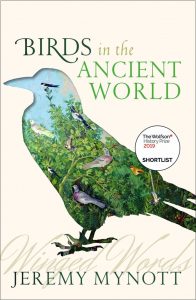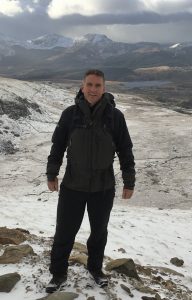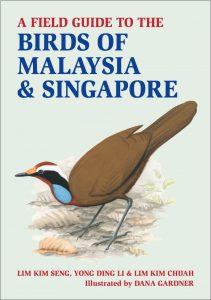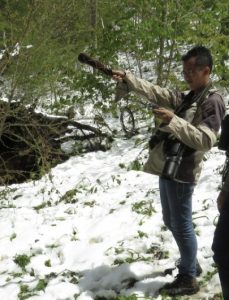
Behavioural ecologist and entomologist William Eberhard is an emeritus scientist at the Smithsonian Tropical Research Institute in Panama and emeritus professor at the Universidad de Costa Rica. His research interests include sexual selection, evolution, and animal behaviour, and one group of organisms he has worked on in particular is spiders. Based on half a century of study, Spider Webs is an unprecedented and very large book on their biology, evolution, and diversity. Leading up to publication, we dipped into the book and asked him some questions.
As I was reading your book, it seemed all the spiders in my garden were out to build webs and I found myself barred from reaching my laundry one morning. How bad should I feel for accidentally destroying a web?
Out of consideration for my fellow inhabitants of the Earth, I always walk around webs rather than through them. But that is my own idiosyncrasy. Many spiders make a new web every day, so having a web knocked down is not a big disaster. Some move away from sites where their webs have been destroyed, so you might decide where to walk, depending on whether you do or do not want the spider to stay at the same site.
Spider webs are marvellous contraptions, even more so when you realise how they are made. You explain how spiders are virtually blind to their own web lines and that webs are often built at night. This implies an important role for tactile senses. Yet, construction starts by floating so-called bridge lines to distant objects, suggesting a role for vision. How good is spider eyesight and how much do we know about their visual acuity?
Eyesight has little and probably nothing to do with their floating bridge lines. Casting those lines down the wind constitutes a blind bet that maybe there is some object there that they will snag on.
 You point out that the majority of published behavioural observations have been of mature females. What do we know about males and immature spiders? Is web construction specifically a female activity? Or have we just not looked hard enough?
You point out that the majority of published behavioural observations have been of mature females. What do we know about males and immature spiders? Is web construction specifically a female activity? Or have we just not looked hard enough?
In most spider families, mature males dedicate themselves nearly strictly to sex –finding receptive females is probably a tough job. They stop making prey capture webs and lose the glands that made the sticky silk in these webs. They also stop eating, except, in a few species, in which males occasionally temporarily appropriate a web from a smaller, immature individual. Immature individuals, both male and female, make webs.
A web is built from various different kinds of silk, and different parts have different functions, from structural support to prey capture. How do spiders control what kind of silk they release, especially given that some species can build a complete web in as little as half an hour?
Presumably valves in the ducts of different types of silk glands open or close to control which types of silk are extruded from the corresponding spigots. Even in a given orb, the kinds of silk that are used to cement lines together are turned on and turned off hundreds of times in an extremely precise manner during the construction of a single web.
 You mention that orb webs are neither the pinnacle of web evolution nor necessarily the optimally designed structures that they are often claimed to be. Most organismal traits are a product of history and contingency as much as natural and sexual selection. I might be asking you to speculate here, but, in your opinion, are there any particular evolutionary thresholds that spiders have not been able to cross that would make a big difference for web construction?
You mention that orb webs are neither the pinnacle of web evolution nor necessarily the optimally designed structures that they are often claimed to be. Most organismal traits are a product of history and contingency as much as natural and sexual selection. I might be asking you to speculate here, but, in your opinion, are there any particular evolutionary thresholds that spiders have not been able to cross that would make a big difference for web construction?
There is a small section in the book (Section 9.8) where I discuss web designs that are possible but that have not arisen in spiders. In general, they have used radial rather than rectangular arrangements of lines; I do not know whether the widespread adoption of and ensuing variations on rectangular arrangements would have made a big difference or not.
Do you find that technological advances have changed the way arachnologists work and the sorts of questions they ask?
Yes, very much so. Important techniques that have begun to be used and that have produced new kinds of data during my lifetime include electron microscopy (especially scanning electron microscopy), molecular comparisons to produce phylogenies, digital movies, virtual sections (“micro-CT scans”), and large scale, computerized data analysis. At the same time, fads for using these techniques have led to less frequent use of simpler but powerful types of observations such as study of the details of behaviour.
 Producing a book of this scope must have been a tremendous job, and you remark that a thorough, book-length review of spider webs had yet to be written, despite more than a century of research on spiders. With the benefit of hindsight, would you embark on such an undertaking again?
Producing a book of this scope must have been a tremendous job, and you remark that a thorough, book-length review of spider webs had yet to be written, despite more than a century of research on spiders. With the benefit of hindsight, would you embark on such an undertaking again?
I seriously underestimated how difficult it would be. I had written two books previously, both largely concerned with ideas, rather than being attempts to review previous work as was the case in this book. My previous experience did not prepare me for the challenges of reviewing and evaluating – and in some cases arguing against (hopefully sympathetically and constructively) – conclusions from previous work.
You mention this book’s coverage is inevitably idiosyncratic. What lacunae remain in our knowledge that future authors could fill with further work?
My major deficiencies are in the chemical and mechanical aspects of silk – a field that is currently very active and that will undoubtedly eventually (perhaps soon) result in book-length treatments. A second major blank space that I hope will be filled with future work is linking web construction behaviour to the slowly emerging but very important field of animal cognition. The many advantages of orb webs for studying the details such as errors and other difficult questions in the behaviour in animals whose behaviour has a major innate component (and probably little in the way of learning) have yet to be exploited.
 Spider Webs: Behavior, Function, and Evolution
Spider Webs: Behavior, Function, and Evolution
By: William Eberhard
Hardback | November 2020 | £59.99
All prices correct at the time of this article’s publication.






























 Has data from the Inertial Measurement Units (IMUs) you have developed been used in your books?
Has data from the Inertial Measurement Units (IMUs) you have developed been used in your books? Why did you choose Kestrels as the subject for your latest book?
Why did you choose Kestrels as the subject for your latest book? Did you encounter any challenges collecting data for your new book: Kestrel?
Did you encounter any challenges collecting data for your new book: Kestrel? For four successive years we set up an array of video cameras filming breeding Kestrels in a barn in Hampshire. We had one camera filming the comings and goings of the adults and, later the fledglings, and two cameras in the nest box watching egg laying, incubation, hatching and chick growth. We filmed 24 hours every day, turning on IR lights to film at night. We measured egg laying intervals to the nearest minute, found accurate hatch times and watched every prey delivery. We also set up live traps where we knew the male hunted so we could weigh the local voles and mice and estimate how many kgs of rodent it takes to make 1kg of Kestrel. The filming was interesting – over the years the adults brought in slow worms, lizards, frogs and moths, as well as voles, mice and shrews. One male also brought in a weasel. This has long been suspected, but never-before filmed.
For four successive years we set up an array of video cameras filming breeding Kestrels in a barn in Hampshire. We had one camera filming the comings and goings of the adults and, later the fledglings, and two cameras in the nest box watching egg laying, incubation, hatching and chick growth. We filmed 24 hours every day, turning on IR lights to film at night. We measured egg laying intervals to the nearest minute, found accurate hatch times and watched every prey delivery. We also set up live traps where we knew the male hunted so we could weigh the local voles and mice and estimate how many kgs of rodent it takes to make 1kg of Kestrel. The filming was interesting – over the years the adults brought in slow worms, lizards, frogs and moths, as well as voles, mice and shrews. One male also brought in a weasel. This has long been suspected, but never-before filmed.






 After two decades of researching them, has your own attitude towards them changed?
After two decades of researching them, has your own attitude towards them changed? You mention many people seem to think adult flies lack brains, this misconception being fuelled by watching them fly into windows again and again. This may seem like a very mundane question but why, indeed, do they do this?
You mention many people seem to think adult flies lack brains, this misconception being fuelled by watching them fly into windows again and again. This may seem like a very mundane question but why, indeed, do they do this? You explain how insect taxonomists use morphological details such as the position and numbers of hairs on their body to define species. I have not been involved in this sort of work myself, but I have always wondered, how stable are such characters? And on how many samples do you base your decisions before you decide they are robust and useful traits? Is there a risk of over-inflating species count because of variation in traits?
You explain how insect taxonomists use morphological details such as the position and numbers of hairs on their body to define species. I have not been involved in this sort of work myself, but I have always wondered, how stable are such characters? And on how many samples do you base your decisions before you decide they are robust and useful traits? Is there a risk of over-inflating species count because of variation in traits?




























 Kim Seng – My friend Dana Gardner, the illustrator of this book, got me interested in doing another book. We had successfully collaborated on a first field guide to the birds of Singapore in 1997 and were keen to work together again. Dana had a friend who was a publisher and we decided to a do a single volume field guide to the birds of the whole of Malaysia, since none existed. This was in 2010. Unfortunately, our publisher pulled out not long after that and we were left stranded. Luckily, through my fellow collaborators – Kim Chuah and Ding Li – we managed to get John Beaufoy interested in our project. A contract was signed in 2016 and as they say, the rest is history!
Kim Seng – My friend Dana Gardner, the illustrator of this book, got me interested in doing another book. We had successfully collaborated on a first field guide to the birds of Singapore in 1997 and were keen to work together again. Dana had a friend who was a publisher and we decided to a do a single volume field guide to the birds of the whole of Malaysia, since none existed. This was in 2010. Unfortunately, our publisher pulled out not long after that and we were left stranded. Luckily, through my fellow collaborators – Kim Chuah and Ding Li – we managed to get John Beaufoy interested in our project. A contract was signed in 2016 and as they say, the rest is history! Kim Seng – Each of us had different ideas on how to do the book and also other personal commitments. We as the writers also had to contend with differences in writing styles. Luckily, we decided to stick with a standard format, came up with a list of who was writing what chapters and what bird families and managed to more or less stick to our deadlines. Another challenge was the impressive work done by our illustrator. He had to do illustrations of all 829 species all by himself. To ensure accuracy, he would send us completed plates for comment, and we duly responded if changes were needed. Not an easy task, as we were based in Singapore and he, in the USA.
Kim Seng – Each of us had different ideas on how to do the book and also other personal commitments. We as the writers also had to contend with differences in writing styles. Luckily, we decided to stick with a standard format, came up with a list of who was writing what chapters and what bird families and managed to more or less stick to our deadlines. Another challenge was the impressive work done by our illustrator. He had to do illustrations of all 829 species all by himself. To ensure accuracy, he would send us completed plates for comment, and we duly responded if changes were needed. Not an easy task, as we were based in Singapore and he, in the USA. Kim Seng – Well, COVID-19 has placed tremendous restrictions on travel in both Malaysia and Singapore. You could bird in certain areas but only with social distancing and other safe practices in place. Initially, we could only look at the birds from our balconies or backyards but this was an opportunity for some of us to study some of the neglected urban birds and understand a little better. I actually published two blogs based on my observations of urban birds from my balcony! In the last couple of months, restrictions have been eased and we are allowed to go birding in our favourite birding places, but I’m still waiting for the day when I can travel freely and bird in Malaysia again.
Kim Seng – Well, COVID-19 has placed tremendous restrictions on travel in both Malaysia and Singapore. You could bird in certain areas but only with social distancing and other safe practices in place. Initially, we could only look at the birds from our balconies or backyards but this was an opportunity for some of us to study some of the neglected urban birds and understand a little better. I actually published two blogs based on my observations of urban birds from my balcony! In the last couple of months, restrictions have been eased and we are allowed to go birding in our favourite birding places, but I’m still waiting for the day when I can travel freely and bird in Malaysia again. Kim Seng – Three reasons – good birds, good food and good company. All three are never in short supply in these two amazingly friendly countries. The people are generally very friendly and the variety of local food is really incredible. Of course, the fascinating diversity of birds, with over 800 species of birds and Bornean, Peninsular and Sunda endemics in abundance are dreams to savour for birdwatchers and ornithologists alike.
Kim Seng – Three reasons – good birds, good food and good company. All three are never in short supply in these two amazingly friendly countries. The people are generally very friendly and the variety of local food is really incredible. Of course, the fascinating diversity of birds, with over 800 species of birds and Bornean, Peninsular and Sunda endemics in abundance are dreams to savour for birdwatchers and ornithologists alike.